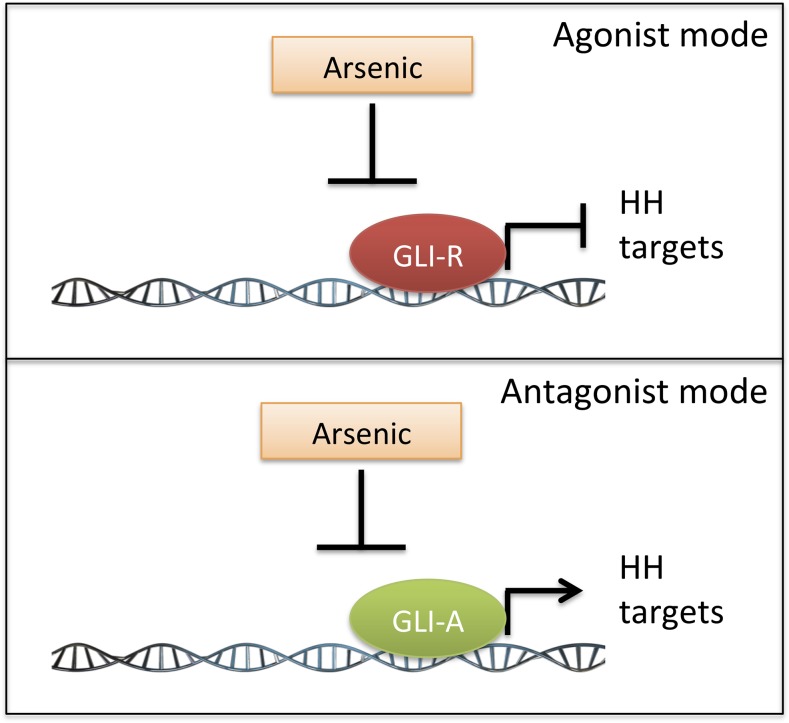Fig. 5.
A schematic model of how ATO modulates GLI/HH signaling in different contexts. ATO suppresses the activity of GLI proteins in both their activator and repressor forms. In cells with a low level of HH signaling, arsenic inhibits the repressor forms of GLI and thus results in a net increase in basal HH signaling (agonist mode). In cells with high levels of HH signaling, arsenic serves as an inhibitor of the activator forms of GLI (antagonist mode) and therefore decreases HH signaling.

